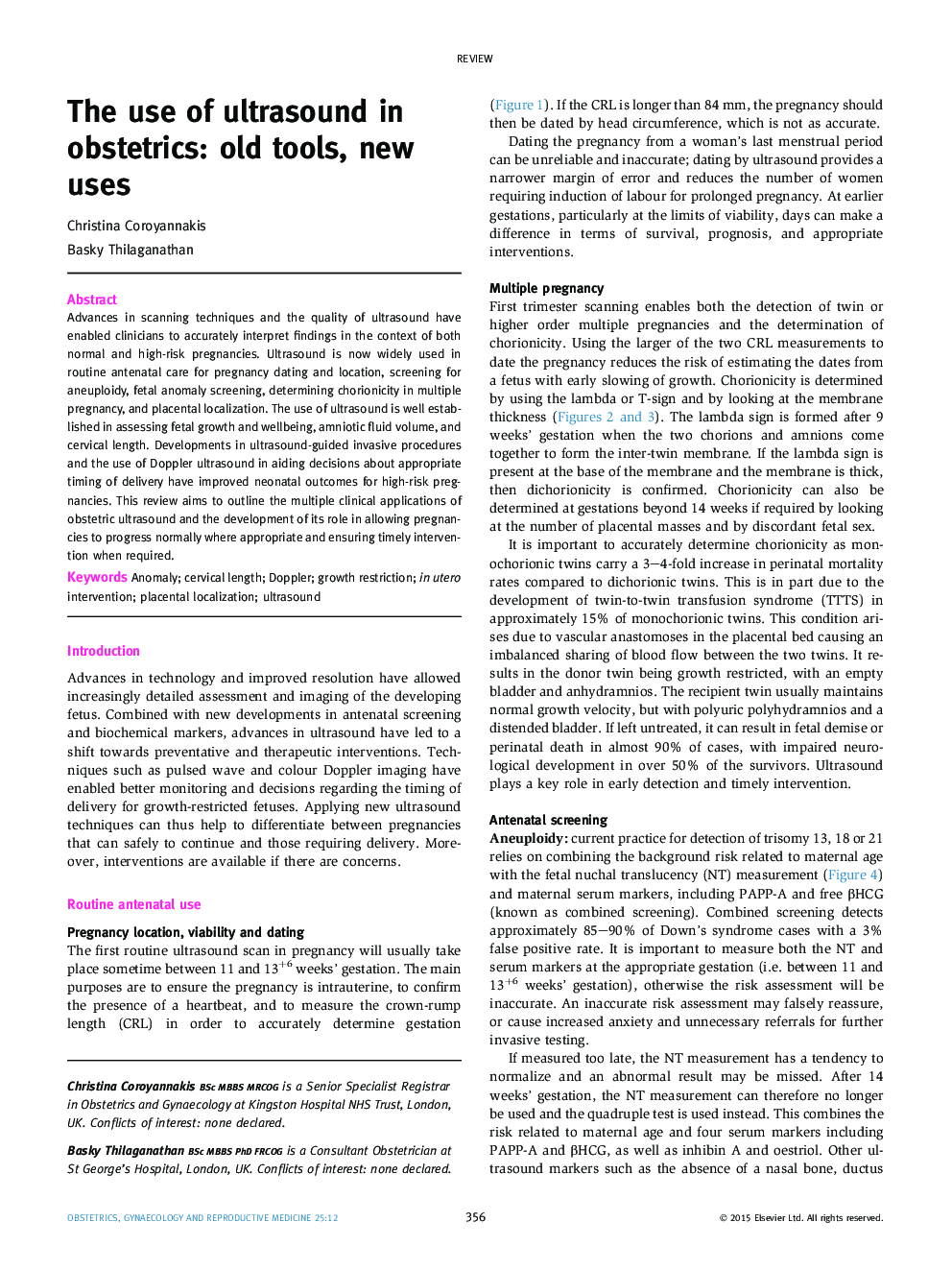| Article ID | Journal | Published Year | Pages | File Type |
|---|---|---|---|---|
| 3966567 | Obstetrics, Gynaecology & Reproductive Medicine | 2015 | 6 Pages |
Advances in scanning techniques and the quality of ultrasound have enabled clinicians to accurately interpret findings in the context of both normal and high-risk pregnancies. Ultrasound is now widely used in routine antenatal care for pregnancy dating and location, screening for aneuploidy, fetal anomaly screening, determining chorionicity in multiple pregnancy, and placental localization. The use of ultrasound is well established in assessing fetal growth and wellbeing, amniotic fluid volume, and cervical length. Developments in ultrasound-guided invasive procedures and the use of Doppler ultrasound in aiding decisions about appropriate timing of delivery have improved neonatal outcomes for high-risk pregnancies. This review aims to outline the multiple clinical applications of obstetric ultrasound and the development of its role in allowing pregnancies to progress normally where appropriate and ensuring timely intervention when required.
